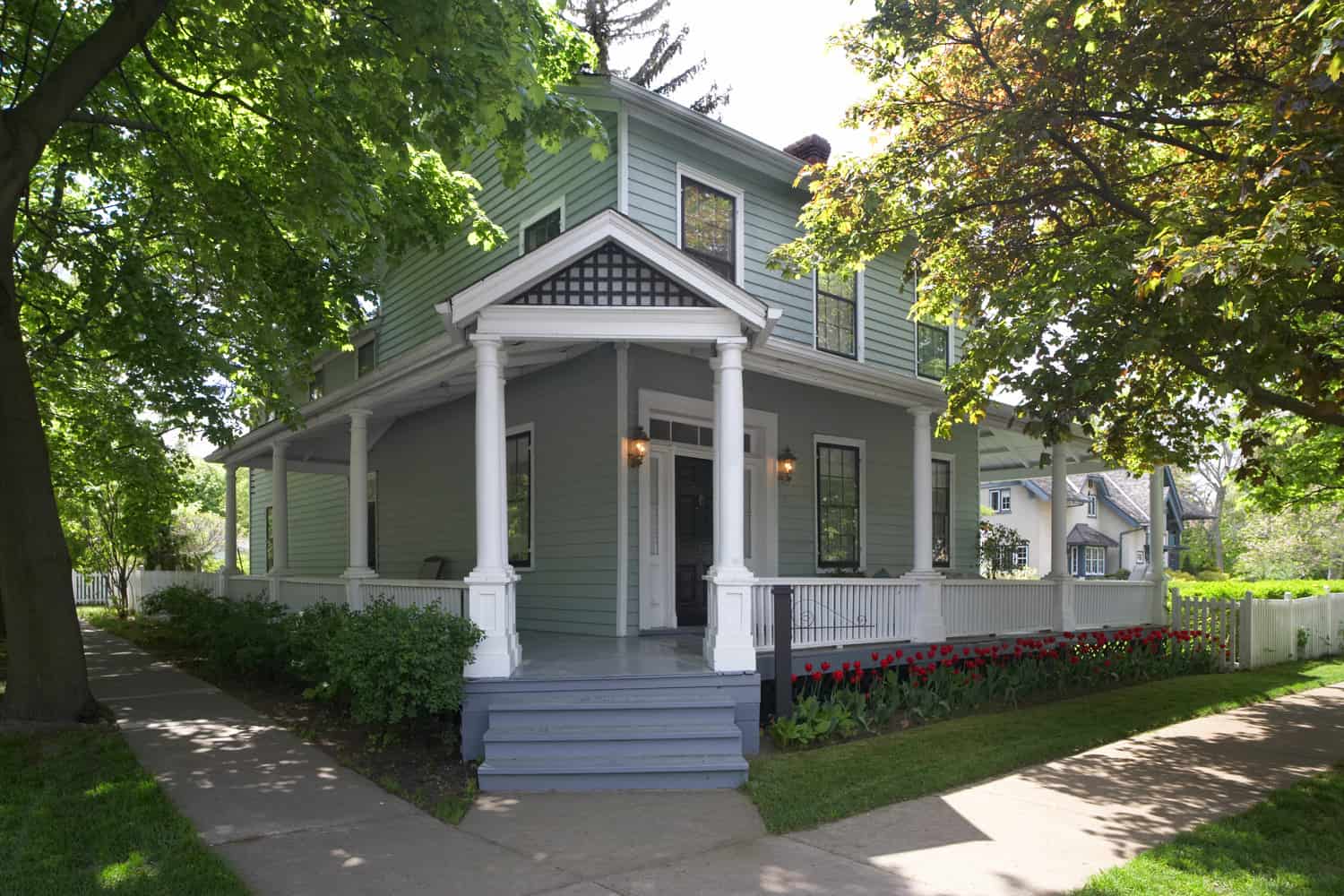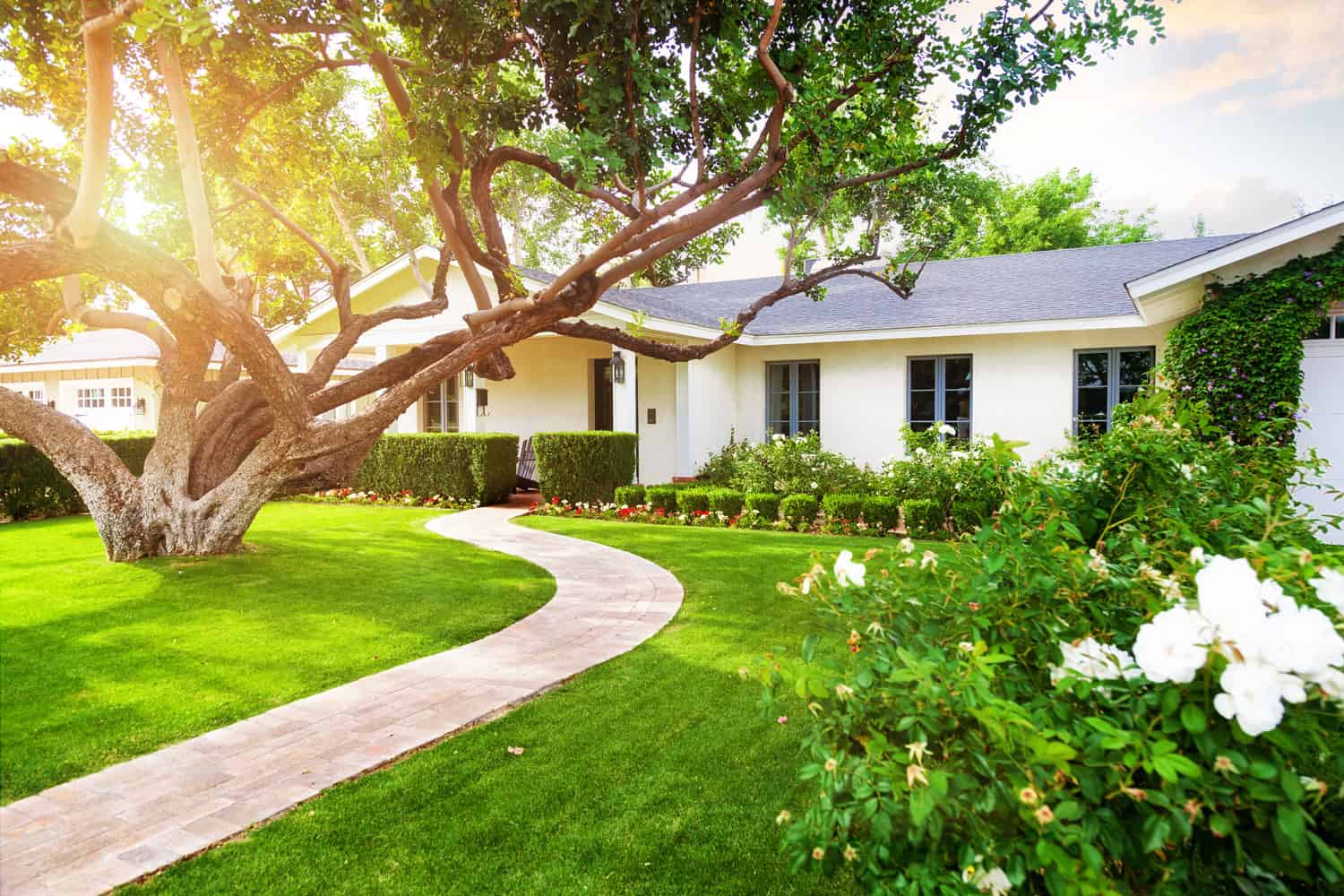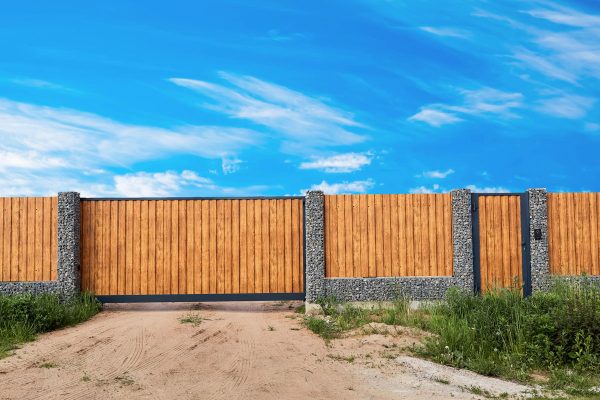Figuring out whether you can fence your corner lot can be tricky since it is dependent on the local laws in your city. You will need to consider a lot of things as well such as the height, front and back fences, and how they will look. How do you know whether you're allowed to fence your corner lot? How do you do it? We have researched answers to find out.
Fenced corner lots have stricter regulations than typical fenced areas. Some counties allow you to build corner lot fences as long as it is not more than 3 1/2 feet high on any side. The fence placed on the first 10 feet from the front yard should also not be more than 3 1/2 feet high.
In some cities, regulations are much more stringent:
- Fences are not to be erected between the side street yard building restriction line of any public or private property.
- Rear lot line fences need to be set back 25 feet from the property line if it can be a continuation of the front yard next to your property.
Different cities have different codes for fencing properties, but corner fences can be tricker. This is because corner lots cross two streets, with the other one being a sidewalk--essentially for the public. If you are interested to learn more about corner lots and fences, keep reading below.

How do you fence corner lots?

Corner lots border public areas such as sidewalks, so you can't fully build privacy fences there--the most you can build are 4-foot tall ones, and that is only if your city allows you to build them.
The fences and surrounding greenery can potentially block motorists from seeing street signs, increasing the risk of accidents. Pedestrians, especially children and the elderly, also need to see street signs properly.
Obstacles such as tall fences may cause serious injuries, especially with cars driving by. Although fences can beautify your outdoor scape, public safety should still be priority number one.
Consider the Clear Zone
Zoning laws in some cities require a 45-foot zone for elements that may potentially disrupt a clear view--including fences. These obstructing elements are required to be no more than 3 feet tall, especially thick shrubs.
The clear zone allows the roadside area to be safely passed by pedestrians, so if your lot happens to have a tree, the canopy should be no less than 7 feet tall. The height should effectively prevent the leaves from covering street signs or causing accidents for pedestrians.
Fence Height Restrictions

Some cities allow for fences up to 4 feet for corner lots, but you can go lower, say, 3 feet to be on the safe side. Remember that you still need to ask permission from city hall or council if you want to build a fence around your corner lot.
When building corner lot fences, you need to identify which parts are your "front side" and "corner sides." The front property line refers to the shortest side that faces the street. The longer frontage is considered the corner-side property line.
You may find that some regulations differ from others. Corner lot fence restrictions are unique; it all depends on the foot and motor traffic in the area and what your town hall thinks works best. It is best to personally call the city hall to be clear on fence height restrictions to avoid issues.
It is recommended to document your conversation with an officer from your city hall so that you'll have something to show in case you get questioned in the future.
Setbacks from Roads
Some cities require that your corner lot will need to be setback from the main road by 20-30 feet. Note that the property line does not start at the curb, but at least 9 feet from the back of the curb. Note that fences in this area cannot exceed 3 feet in height.
Cities don't allow corner fences above 3-1/2 feet to be built in areas abutting the front setback of the key lot. Additionally, rear yard fences need to be set back 25 feet from the property line.
What is a side street?
Side street yards, as defined by local laws, refer to the yard side-facing the street extending from the setback of a residential building to the street line.
Remember that fences typically need to be 2 to 8 inches away from the property line for it to be approved. If you are unsure about where your setback and side street start, ask your local office for a survey map.
How tall can you build your fence?

Corner fence or not, it needs to adhere to local laws. There are no set standards for typical fences that are not in corner lots, but they are typically around 4 feet in height. You can build privacy fences in a residential backyard with a height of up to 6 feet.
How to determine your property line
Determining your property line is essential to comply with local laws when building any outdoor fixture. It will also help you avoid conflict with neighbors over property lines, so figuring this out early on can solve small problems.
Homeowner's Deed
One of the ways you can be assured of your property lines is through a homeowner's deed. This document should have a legal description of the land, so it should help you identify your plot better.
Calling a Surveyor
You can also hire a surveyor to help you understand your legal property better. A surveyor should help you with the research of your property's history, title, and of course, the boundary lines.
Local Office Assessor
If a surveyor might be too much, you can ask your city's local recorder or assessor. This way, you can have access to public maps and be able to identify your property lines more accurately. This is especially ideal if you find yourself to be in conflict with a neighbor.
If you intend to build your fences for the first time, now would be the perfect time to draw the clear lines on the measurements of your land.
How to Have Privacy in Corner Lots

If fences are not allowed in your area, you can try to improve your landscape and provide privacy to your home by planting greenery. As always, you may still need to ask if there are any regulations for how high your greenery should be to avoid issues in the future.
One way you can somehow shield your home's exterior is by planting medium trees, just ensure that the canopy is high enough that it doesn't obstruct the pedestrians from road signs.
If you intend to plant evergreen shrubs, make sure to maintain them so that it doesn't cross the public streets. Trimmed well, they can add value and an adequate boundary to your landscape.
Other outdoor fixtures such as birdhouses, birdbaths, and novelty statues can also beautify your landscape. They can also serve as a buffer from balls being thrown by rowdy children in the street.
Read: "Neighbor Looking Over The Fence—What To Do?"
What fences are prohibited in residential districts?
Fences made of chained links such as barbed wires, chicken wires, or hog fencing are generally prohibited in residential areas. This is because the material can cause serious injury to residents.
It is only allowed provided that it is located in the backyard and that the outside doesn't open to street-side property lines
Read: "Can You Put Barbed Wire On A Residential Fence?"
Final Thoughts

Privacy and security are the main reasons why we opt for fences. However, you need to make sure that you are adhering to your local laws. Familiarize yourself with your property lines, and make sure that you are not obstructing anyone or anything.
As with any outdoor fixture, make sure that it improves your quality of life and elevates your home both in form and function.


![Close board fence erected around a garden for privacy with wooden fencing panels, concrete posts and kickboards for added durability, Are Gravel Boards Treated? [And How Long Do They Last]](https://fencefixation.com/wp-content/uploads/2022/06/Close-board-fence-erected-around-a-garden-for-privacy-with-wooden-fencing-panels-concrete-posts-and-kickboards-for-added-durability-600x400.jpg)
![Wooden fence with green lawn and trees, Stepped Vs. Racked Fence Installation [Where & How To Use Each]](https://fencefixation.com/wp-content/uploads/2022/06/Wooden-fence-with-green-lawn-and-trees-600x400.jpg)